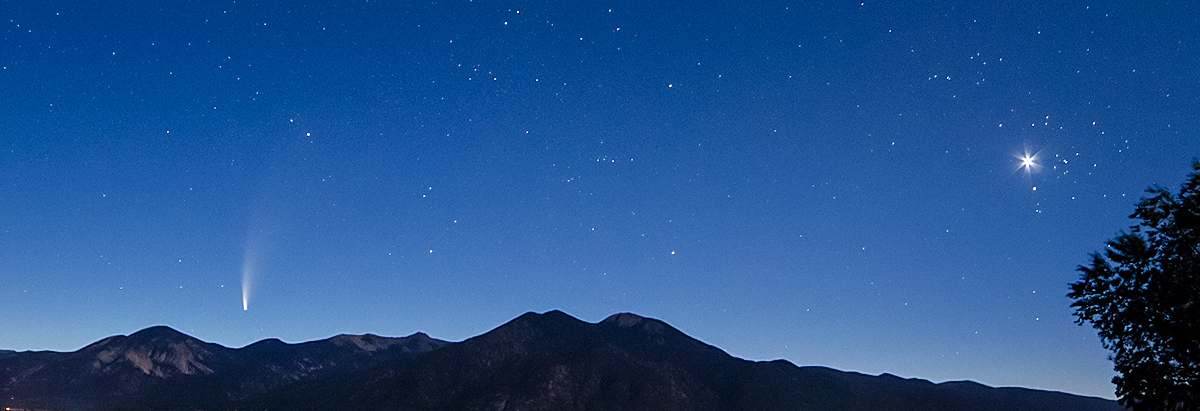
Welcome to taosastronomer.com!
offering
local "hands-on" observing
(visual and imaging) sessions and instruction
viewing and imaging from Rabbit Valley Observatory
a dark sky location on the mesa just west of Taos, NM
Image obtained October 29-30, 2016 through RVO's Megrez 80mm refractor with Orion field-flattener lens, using a Baader-modified Canon XSi DSLR and BackyardEOS image-acquisition software – 28 of 29 carefully selected and stacked 300 and 420-second luminance frames combined with multiple dark, flat and bias calibration frames shot at ISO 1600 and totaling more than 390 minutes (150 minutes effective luminance) were used to create this image; optics driven by the Losmandy G-11 mount equipped with Ovision's precision RA worm gear, guided with a ZWO ASI 120MM Monochrome CCD camera through a 60mm guidescope using PhD2 guiding software and post-processed with DeepSkyStacker, Digital Development Process in Maxim DL Pro, NI noise reduction and Photoshop CS3 s/w.
[copyright Rabbit Valley Observatory/Willis Greiner, 2016 -- all rights reserved]
|
Image (merely enlarged from image above) obtained October 29-30, 2016 through RVO's Megrez 80mm refractor with Orion field-flattener lens, using a Baader-modified Canon XSi DSLR and BackyardEOS image-acquisition software – 28 of 29 carefully selected and stacked 300 and 420-second luminance frames combined with multiple dark, flat and bias calibration frames shot at ISO 1600 and totaling more than 390 minutes (150 minutes effective luminance) were used to create this image; optics driven by the Losmandy G-11 mount equipped with Ovision's precision RA worm gear, guided with a ZWO ASI 120MM Monochrome CCD camera through a 60mm guidescope using PhD2 guiding software and post-processed with DeepSkyStacker, Digital Development Process in Maxim DL Pro, NI noise reduction and Photoshop CS3 s/w. As a side-note, clicking on the above text link takes you not only to a nice description of the Cave Nebula and region, but also introduces you to a absolutely spectacular image by Adam Block; the same Adam Block that gave me my first instruction into CCD-type astrophotography when he was in charge of the Kitt Peak National Observatory outreach program. I was privileged to spend one night at the telescope with him, actually taking pictures. Really though, he took the pictures while I watched and did what I was told. It was one of the most intense learning experiences of my life. He moved on to become the founder of the stargazing programs and essential creative director of the University of Arizona's Mt. Lemmon SkyCenter. So, Adam Block is now, just a few years later, one of the most renowned and sought-after astrophotographers in the world! Thanks, Adam!
[copyright Rabbit Valley Observatory/Willis Greiner, 2016 -- all rights reserved] |
(all content copyright 2015-2019 Willis Greiner Photography, all rights reserved)